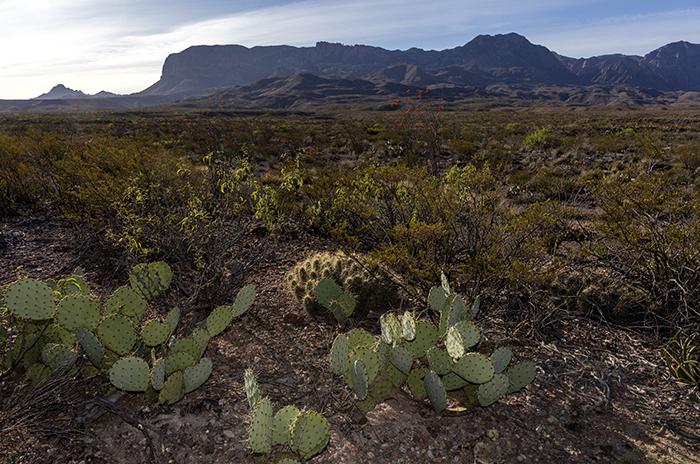
Morning sun on the desert, Big Bend National Park / Rebecca Latson
Cactus, cactus, everywhere and nary a bloom on any …
As you can by now discern, I really like Big Bend National Park, here in southwest Texas. I’ve visited this park 4 times over the last 3 years, during winter and spring, even though it’s out in the middle of nowhere. Regardless of this national park’s remoteness, I really wanted to return here during the spring of this 2016 National Park Centennial to see the cactus in bloom. For practically a month, all I could think about was the huge park-wide bloom I’d witnessed and photographed during late April of 2014. All I could see in my mind’s eye were brilliant yellow, orange and magenta blossoms poking out between the long, sharp (potentially painful) cactus needles. I packed cameras and lenses for this trip with those mental images in mind.
My first inkling of what the park would look like occurred during my late March drive south toward Marathon, a town about 30+ miles north of the Persimmon Gap entrance to the park. The brown, baked landscape produced not a single blooming cactus that I could espy from my rental car’s windows. I felt the niggling worry of doubt in the pit of my stomach. My worry ultimately turned to disappointed resignation after speaking to the park ranger at the Persimmon Gap entrance. In response to my cactus bloom query, the ranger shook his head and said “Well, I’ve seen a few cactus flower photos on our Facebook page, so there must be something out there. The cactus just aren’t blooming because there hasn’t been much rain this year.”
OK, I might not see any blooming cactus during my 2016 spring visit, afterall, so I'd better find other subjects with which to fill my camera’s viewfinder.
That’s the gist of this article. It happens more often than not. You travel to a national park known for its wildlife or snow-capped peaks or – in my case – lots of flowering cactus during the springtime. You expect to see things for which that particular national park is famous. Instead, you see: nada. Allow me to qualify that. What I mean is that you don’t see what you expected to see.
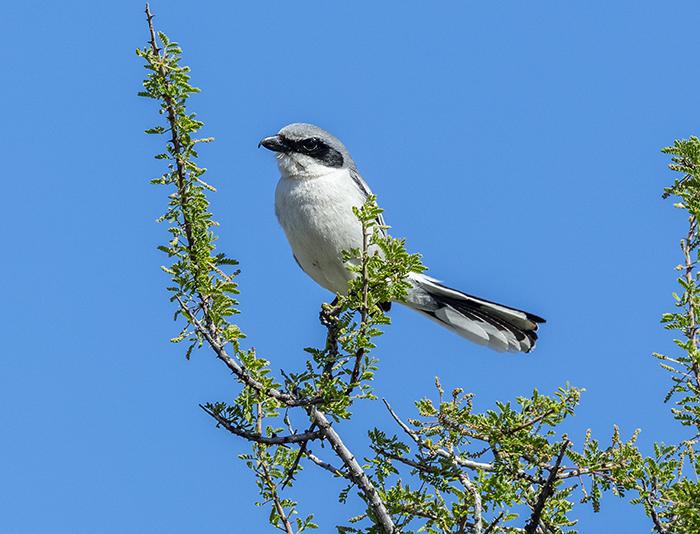
Shrike in Big Bend National Park / Rebecca Latson
What do you see instead? Swallow that disappointment and start observing the unexpected or overlooked beauty within the national park you are visiting.
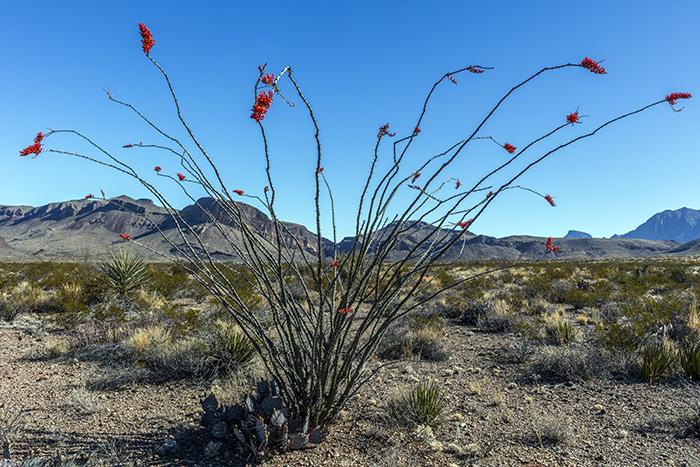
Blooming ocotillo, Big Bend National Park / Rebecca Latson
In my case, cactus might not have been in bloom, but the ocotillo sure were. Where ever I looked within the Chihuahuan Desert landscape, I could see this orange-tipped plant standing tall among the shrub. Ocotillo is not a cactus, although many mistake it for one, due to its long, spindly stems loaded with short, sharp thorns. During the spring, each of the tips of those stems are topped with a bright, orange-red cluster of flowerets. To get a good shot of this interesting plant, I figured I could do one or more of several things: capture a close-up of the blooms, frame the plant vertically to emphasize its height, or create a horizontal view with the desert landscape in the background.
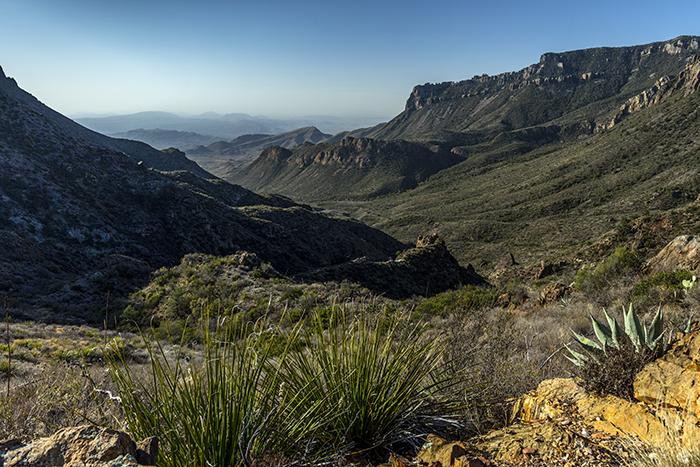
The view along Lost Mine Trail, Big Bend National Park / Rebecca Latson
The hiking trails in Big Bend National Park offer amazing vistas. The day was clear and sunny during my hike along Lost Mine Trail. I affixed my circular polarizer to my lens in order to add some color saturation to the blue sky, buff-colored rock and green vegetation, while reducing the light haze over the distant background.
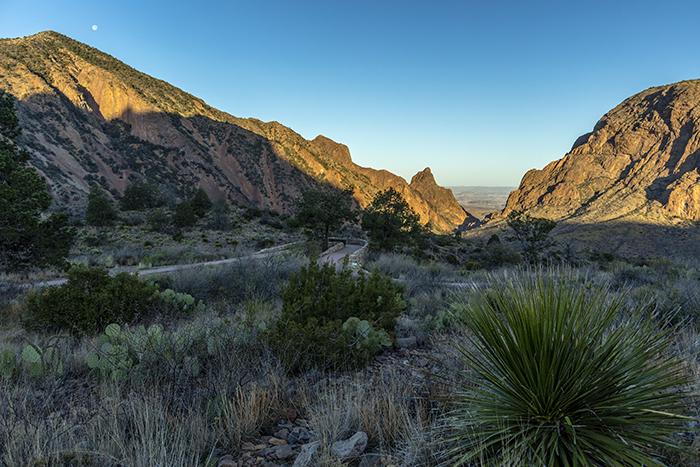
Early morning view of the Window, Big Bend National Park / Rebecca Latson
Prior to my hike up Lost Mine Trail, I took a short morning stroll along the paved/graveled path just off the Chisos Mountains Lodge parking lot, to and from the Window view point. As expected, the scene below the horizon was still shaded and the sun only high enough over the basin to touch the tops of the mountins in front of me. I used my graduated neutral density filter (grad ND) to darken the sky while setting my camera’s exposure for the shaded foreground. The grad ND kept me from blowing out (overexposing) the brighter sun-tipped mountains and sky.
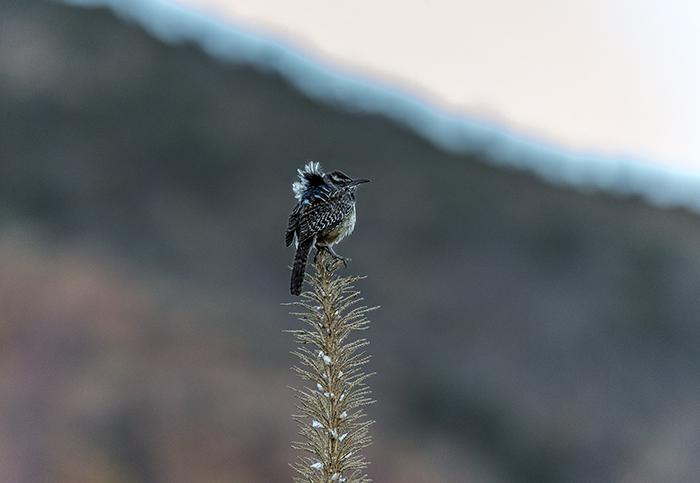
Early birdy at Big Bend National Park / Rebecca Latson
While on that same morning stroll, I kept hearing a distinctive birdsong (that I won't even attempt to phonetically write down here). My eyes finally lit upon this one lone little birdy perched precariously on the tip of the sotol plant. Using my 100-400mm zoom lens, I set my exposure for the bird and not the background. My act of bringing the camera to my eye was slow and I tried to remain relatively quiet, because little birds like that are quick to fly the coop at the mere flicker of human movement.
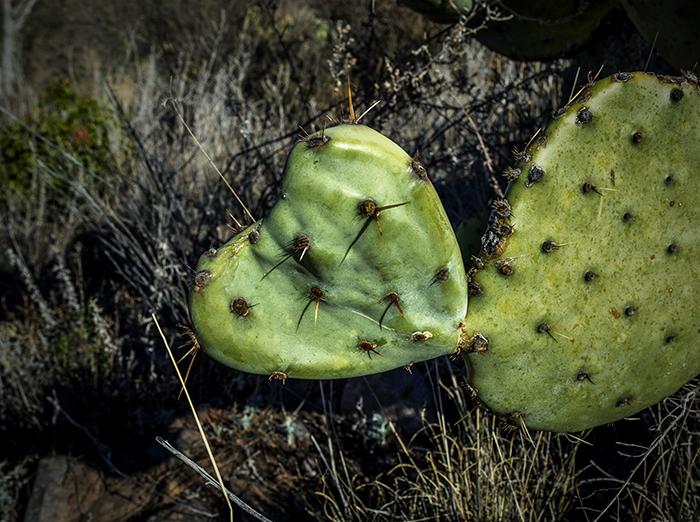
I Heart Big Bend National Park / Rebecca Latson
Because none of the cactus was in bloom, I concentrated instead on the cactus shapes. Had I not done so, I might have missed this heart-shaped prickly pear.
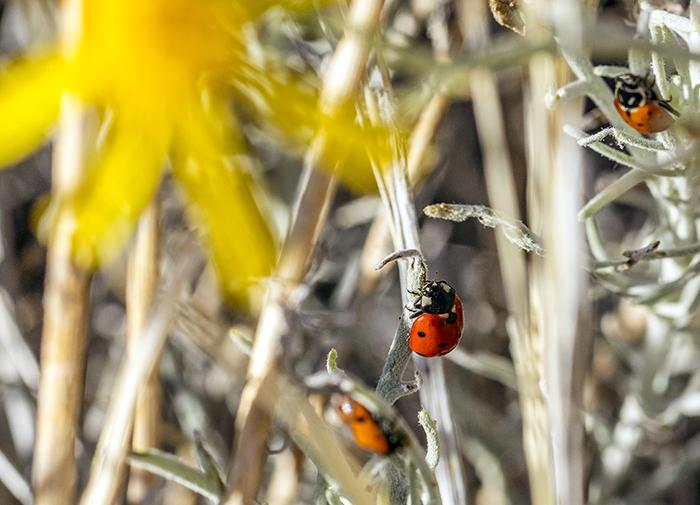
Ladybugs in the bush, Big Bend National Park / Rebecca Latson
Speaking of looking closer at a subject, I had actually stopped to photograph the yellow flower on the bush in the photograph above. My eyes caught these little ladybugs on the stems. When I was a little girl, my mother used to tell me that ladybugs represented good luck. How could I not photograph them? I happened to have my 100mm macro lens with me to freeze-frame these little cuties.
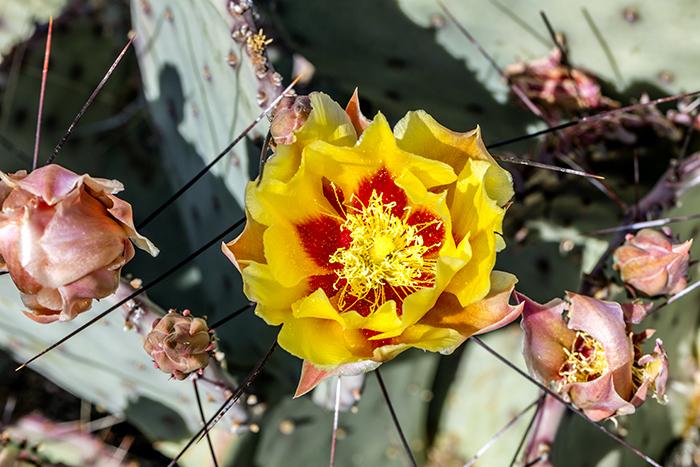
Prickly pear bloom, Big Bend National Park / Rebecca Latson
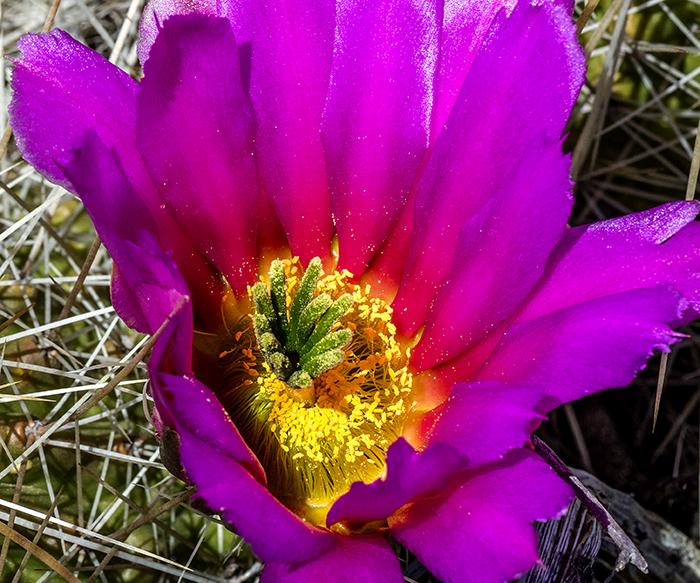
Pitaya bloom, Big Bend National Park / Rebecca Latson
To my great delight, I ultimately found an area within this national park bearing blooming cactus. No, the cactus were not flowering everywhere in the park, but they were in some spots. For those of you who might decide to visit Big Bend National Park in 2017 during late March, travel along the Ross Maxwell Scenic Drive, pass by the Sotol Vista turnoff and drive around that hairpin curve toward the Chihuahuan Desert floor. Keep a sharp eye out for all the prickly pear cactus blooming or budding alongside the road. The blooms range from a vanilla color to various hues of bright orange and yellow. You might also spot a shot of bright magenta from a pitaya cactus. I assume (regardless of how dangerous it is to assume), that the lower elevations may receive more water than the upper elevation of the park, which is why I discovered the blooms where I did. If you are driving during the morning hours, the blooms will be more difficult to suss out because they close at night and take a while to open back up in the morning.
In retrospect, I was content to find other forms of beauty within the park, and happy with the resulting images. When I finally did discover blooming cactus, my sense of wonder and beauty were jump-started and I considered this lucky find the icing on the photographic cake. So, keep your expectations to a minimum when visiting a national park famous for some particular vista or wildlife, and I believe you will be pleased and proud of the images your camera ultimately captures. You'll reap great rewards with loaded memory cards, regardless of whether you see what you were originally expecting to see or not.
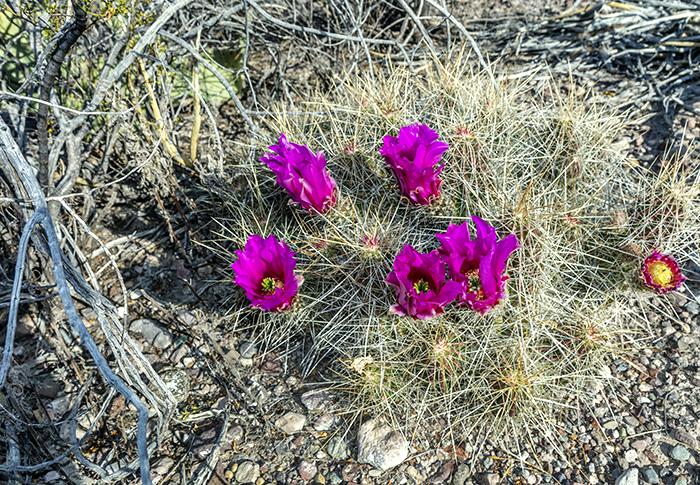
Pitaya cactus blossoms, Big Bend National Park / Rebecca Latson



Comments
Love the heart shaped cactus!
I also visited Big Bend National Part in late March -April 2016. The Claret Cup cactus were blooming everywhere along the Window Trail and as you mentioned the Ocotillo were all blooming throughout the park.
The second bird picture is of a Cactus Wren. The biggest of the Wrens.